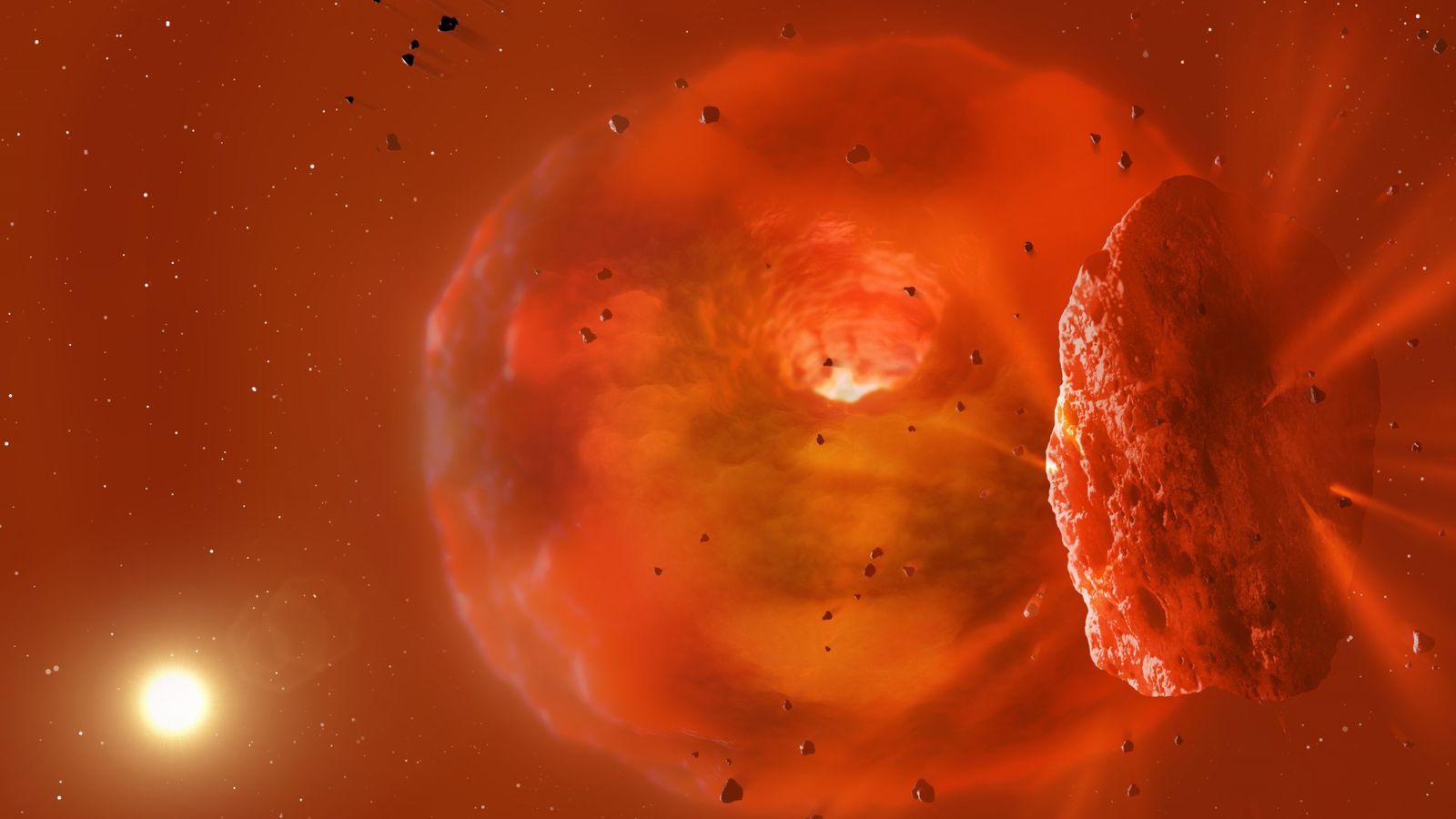An explosive collision between two icy giant planets has been discovered, after being spotted on a social media post by an amateur astronomer.
A blaze of light and plumes of dust were created after the two exoplanets (planets that orbit a star outside the solar system) 1,800 light years away from Earth, crashed around a sun-like star.
The bright heat afterglow and dust cloud then moved in front of the star which the planets orbited, and dimmed it over time.
It was the star brightening over a thousand days before the optical fading that was pointed out by an enthusiast on social media, and consequently explored by a team of international astronomers.
The light curve of the star showed the system doubled in brightness at infrared wavelengths some three years before the star started to fade in visible light.
“To be honest, this observation was a complete surprise to me,” Dr Matthew Kenworthy, from Leiden University and co-lead author of a paper that published the findings, said.
He said he knew it was an “unusual event”.
Read more from Sky News:
NASA to explore giant metal asteroid Psyche
New images of rogue planets floating together
Over the next two years, a network of professional and amateur astronomers studied the star intensively, including changes in its brightness.
It was named ASASSN-21qj after the network of telescopes that first detected the fading of the star at visible wavelengths.
“Our calculations and computer models indicate the temperature and size of the glowing material, as well as the amount of time the glow has lasted, is consistent with the collision of two ice giant exoplanets,” Dr Simon Lock, co-lead author from the University of Bristol, said.
So, what will happen now?
The cloud of dust is expected to start spreading out along the orbit of the remnant created in the collision.
This remnant essentially becomes a new planet, with the mass of material around it likely to condense and form a collection of moons that will orbit it, Dr Zoe Leinhardt, another co-lead author from the University of Bristol said.
A scattering of light from this dust cloud could be detected from both ground-based telescopes and NASA’s largest telescope in space, known as JWST.
The next developments will be monitored closely by astronomers.









